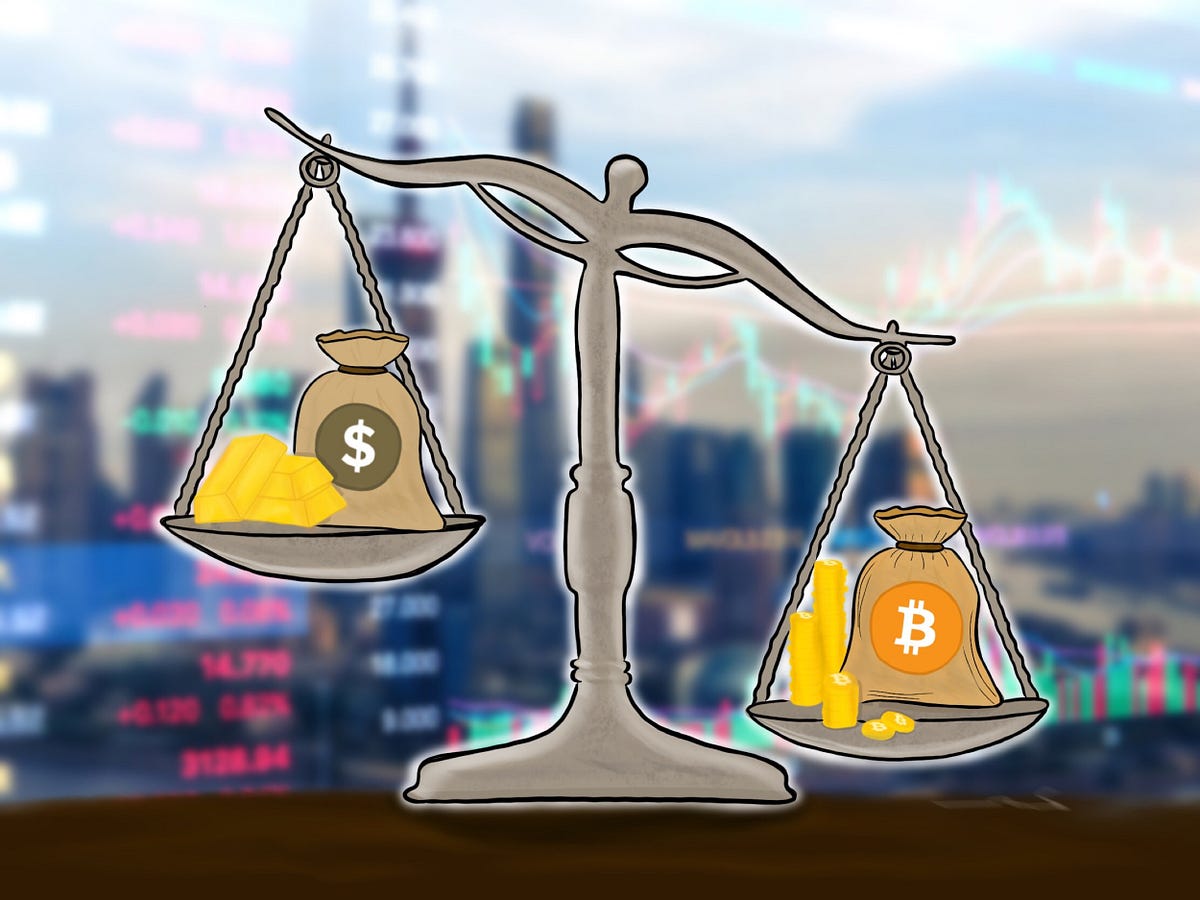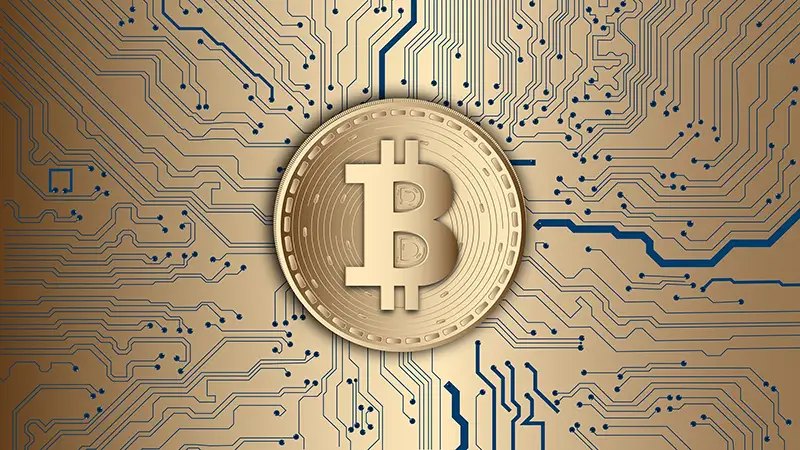Why Does Bitcoin Have Value – Unraveling the Digital Gold Phenomenon
In recent years, Bitcoin has emerged as a revolutionary financial asset, captivating investors, governments, and technologists alike. But amidst its meteoric rise, a fundamental question persists: Why does Bitcoin have value? Understanding the intrinsic and extrinsic factors that underpin Bitcoin’s worth is essential not only for investors but also for anyone interested in the future of money and digital assets.
This comprehensive article explores the various dimensions behind Bitcoin’s valuation, delving into its scarcity, decentralization, utility, perception, and market dynamics. By dissecting these elements, we aim to illuminate the reasons why Bitcoin commands such significance in today’s economy and what sustains its value beyond mere speculation.
The Concept of Scarcity – Bitcoin’s Digital Gold Standard

One of the primary reasons Bitcoin holds substantial value is its inherent scarcity. Unlike traditional fiat currencies that can be printed endlessly, Bitcoin operates on a fixed supply model codified into its protocol. This scarcity mimics precious metals like gold, creating a foundation for its perception as “digital gold.”
Understanding this scarcity involves exploring Bitcoin’s limited supply, its issuance process, and how these factors influence its perceived value over time.
Fixed Supply and the 21 Million Cap
Bitcoin’s protocol caps the total number of coins at 21 million, a number embedded in its code from inception. This cap ensures no more than 21 million Bitcoins will ever exist, establishing a maximum supply that cannot be increased, regardless of market demand.
This finite supply creates a sense of rarity, which can drive demand—particularly as awareness of Bitcoin increases and other assets face inflationary pressures. The scarcity principle aligns with economic theories suggesting that limited supply enhances an asset’s value when demand remains stable or grows.
Furthermore, the predictable schedule of Bitcoin’s issuance through mining rewards decreases over time—a process known as halving—that further solidifies its scarcity. As miners receive fewer coins for validating transactions, the supply growth slows, intensifying the scarcity effect.
The Impact of Halving Events
Bitcoin’s halving events occur approximately every four years, cutting the reward given to miners by half. These events are pre-programmed and are pivotal in maintaining scarcity.
Each halving reduces the rate at which new Bitcoins enter circulation, effectively tightening supply and potentially increasing demand. Historical data shows that earlier halvings precipitated significant price rallies, illustrating the market’s anticipation of reduced supply versus steady or increasing demand.
The significance of halving extends beyond simple supply mechanics; it also influences miner behavior, network security, and investor expectations. As the supply diminishes, confidence in Bitcoin’s scarcity tends to grow, reinforcing its store of value proposition.
Comparison with Fiat Currency and Gold
While fiat money can be printed without limit, leading to inflation concerns, Bitcoin’s scarcity presents an alternative store of value. Gold, historically regarded as “hard money,” shares similar scarcity principles, but physical storage costs and geopolitical risks limit its utility.
Bitcoin combines the scarcity of precious metals with the convenience of digital transferability, making it uniquely positioned as a scarce, portable, and durable asset. This synthesis elevates Bitcoin’s allure as a hedge against inflation and economic instability.
| Asset Type | Max Supply | Inflation Rate | Accessibility | Storage Complexity |
|---|---|---|---|---|
| Bitcoin | 21 million | Decreasing via halving | Easy (digital) | Low |
| Gold | Limited global stock | No formal inflation control | Physical storage | High |
| Fiat Currencies | Unlimited | Can be infinitely printed | Very easy | Low |
This table highlights Bitcoin’s unique position among scarce assets, combining finite supply with digital ease of transfer.
Decentralization and Trust – Building a New Financial Paradigm

Beyond scarcity, Bitcoin’s decentralized nature plays a crucial role in establishing its value. Unlike traditional currencies controlled by central banks, Bitcoin operates on a peer-to-peer network that dispenses with intermediaries, fostering trustless transactions.
Understanding the mechanics of decentralization reveals how it underpins Bitcoin’s resilience, security, and appeal.
Blockchain Technology and Transparency
At the heart of Bitcoin lies blockchain technology—a distributed ledger that records all transactions transparently across a vast network of nodes.
This openness ensures that no single entity can manipulate transaction history, preventing fraud and censorship. Participants in the network validate transactions through consensus mechanisms like proof-of-work, which require computational effort and cost, deterring malicious activities.
The transparency provided by blockchain fosters trust among users, who can independently verify transaction histories, thereby reducing reliance on centralized authorities.
Security Through Consensus and Mining
Bitcoin’s security model hinges on miners competing to solve complex cryptographic puzzles, a process known as proof-of-work. This competitive validation secures the network against double-spending and attacks.
The decentralized distribution of mining power—spread across global participants—makes it exceedingly difficult for any malicious actor to gain control, ensuring network integrity. This security paradigm engenders confidence in Bitcoin as a reliable form of digital cash or store of value.
Removing Centralized Control – A Paradigm Shift
Traditional financial systems rely heavily on institutions like banks and governments, which carry risks of censorship, inflation, and political interference. Bitcoin challenges this model by eliminating trusted third parties.
By decentralizing control, Bitcoin offers financial sovereignty—users retain full ownership and control over their assets without intermediaries. This attribute appeals especially to those in countries with unstable currencies or restrictive banking environments, adding to Bitcoin’s perceived value.
Decentralization also fosters resilience; even if parts of the network go offline or are attacked, the overall system remains operational due to its distributed architecture.
Personal Insights and Future Outlook
Many see decentralization as a safeguard against the failings of traditional monetary systems. It embodies a shift towards a more inclusive, censorship-resistant financial infrastructure. However, it also introduces complexities related to governance, scalability, and regulation.
As the ecosystem matures, balancing decentralization with usability will be key to sustaining and enhancing Bitcoin’s value proposition.
Utility and Network Effects – Why People Use Bitcoin

The practical utility of Bitcoin continues to evolve, contributing significantly to its valuation. From a transactional medium to a store of wealth, Bitcoin’s diverse applications foster widespread adoption and network effects, reinforcing its intrinsic value.
Understanding these utilities reveals why Bitcoin’s value persists beyond speculative interest.
Digital Gold and Store of Value
Many individuals and institutions regard Bitcoin as a hedge against inflation, political instability, and currency devaluation. Its limited supply and resilient network make it akin to digital gold, attracting wealth preservation strategies.
Over time, Bitcoin has gained credibility as a safe-haven asset, especially during economic downturns. The narrative of Bitcoin as a store of value has driven institutional interest, further validating its utility and expanding its user base.
Cross-Border Transfers and Remittances
Bitcoin simplifies international transactions by providing a borderless, quick, and low-cost alternative to traditional banking channels. Remittances often incur high fees and delays, whereas Bitcoin transactions can be completed swiftly and affordably.
For populations in underserved regions, Bitcoin offers access to global financial markets without needing conventional banking infrastructure. This utility enhances its demand and consequently bolsters its value.
Programmability and Smart Contract Integration
While Bitcoin’s primary function is as a digital currency, innovations like the Lightning Network expand its capabilities for micropayments and instant transactions. Additionally, emerging protocols enable simple smart contracts atop Bitcoin’s network, broadening its functional scope.
These technological enhancements promote broader adoption, increase utility, and embed Bitcoin deeper into the fabric of digital finance.
Network Effects and Adoption
The value of Bitcoin exponentially increases with the number of users, merchants, and institutions accepting it. Each new participant enhances liquidity, improves market depth, and validates its utility, creating a positive feedback loop.
Companies integrating Bitcoin into payment systems, governments exploring digital currencies, and retail outlets accepting BTC all contribute to expanding its real-world usefulness.
Why Perception and Market Dynamics Matter
Market psychology, perception, and speculative activity heavily influence Bitcoin’s valuation. While fundamentals provide a foundation, collective beliefs and behaviors often determine short-term price movements.
Analyzing these dynamics helps clarify why Bitcoin’s value can sometimes seem disconnected from traditional economic models.
Perception as Digital Gold and Safe Haven
Media narratives, influential endorsements, and macroeconomic trends shape public perception of Bitcoin. When seen as a safe haven, especially during economic turmoil, demand surges.
Such perception-driven demand can lead to rapid price appreciation, reinforcing the belief that Bitcoin is a resilient store of value. Conversely, negative news or regulatory crackdowns can diminish perceived safety, causing volatility.
Speculation and Market Sentiment
A significant portion of Bitcoin trading activity is speculative. Traders and investors often buy based on anticipated future value rather than current utility, leading to price swings.
Market sentiment, driven by social media, investor psychology, and macroeconomic indicators, can create bubbles or corrections, showing how perception directly impacts value.
Institutional Involvement and Regulation
Institutional interest lends legitimacy to Bitcoin, influencing perception positively. Regulatory clarity or hostility can also sway market confidence, affecting valuation.
When large firms announce holdings or accept Bitcoin for payments, it signals mainstream acceptance, boosting confidence and demand.
Conclusion
The value of Bitcoin is rooted in a complex interplay of scarcity, decentralization, utility, perception, and market forces. Its fixed supply creates inherent scarcity, akin to precious metals, while blockchain technology provides transparency and security through decentralization. The expanding use cases, combined with growing adoption and positive perceptions, drive demand and reinforce its status as a transformative financial asset. Understanding these multidimensional factors helps explain why Bitcoin maintains its compelling value proposition and why it continues to captivate the global financial landscape.
FAQs
What makes Bitcoin different from traditional currencies?
Bitcoin differs fundamentally because it is decentralized, has a capped supply, and operates on blockchain technology, unlike fiat currencies issued by governments and central banks, which can be printed in unlimited quantities.
How does scarcity influence Bitcoin’s value?
Scarcity, enforced by a maximum supply of 21 million coins, creates a perception of rarity. As demand increases, this limited supply drives up the price, similar to commodities like gold.
Why do people see Bitcoin as a safe haven?
During economic uncertainty or inflation, Bitcoin’s decentralized nature and finite supply make it attractive as a store of value, akin to “digital gold.”
Can Bitcoin’s value be manipulated?
While Bitcoin’s protocol enforces rules and limits manipulation, market perception, speculation, and large trades can cause volatility. Nonetheless, its decentralized nature limits centralized manipulation.
What role do regulations play in Bitcoin’s value?
Regulations can validate or hinder Bitcoin’s mainstream adoption. Clear, positive regulations tend to boost confidence, while bans or restrictions can suppress demand and affect prices.
Conclusion
Understanding why Bitcoin has value requires examining its scarcity, decentralization, utility, perception, and market dynamics. These elements combine to create a robust ecosystem where trust, utility, and community consensus uphold its worth—transforming Bitcoin from mere digital innovation into a new paradigm of financial sovereignty. As adoption grows and technological advancements continue, Bitcoin’s intrinsic and perceived value are poised to evolve, shaping the future of digital finance.
